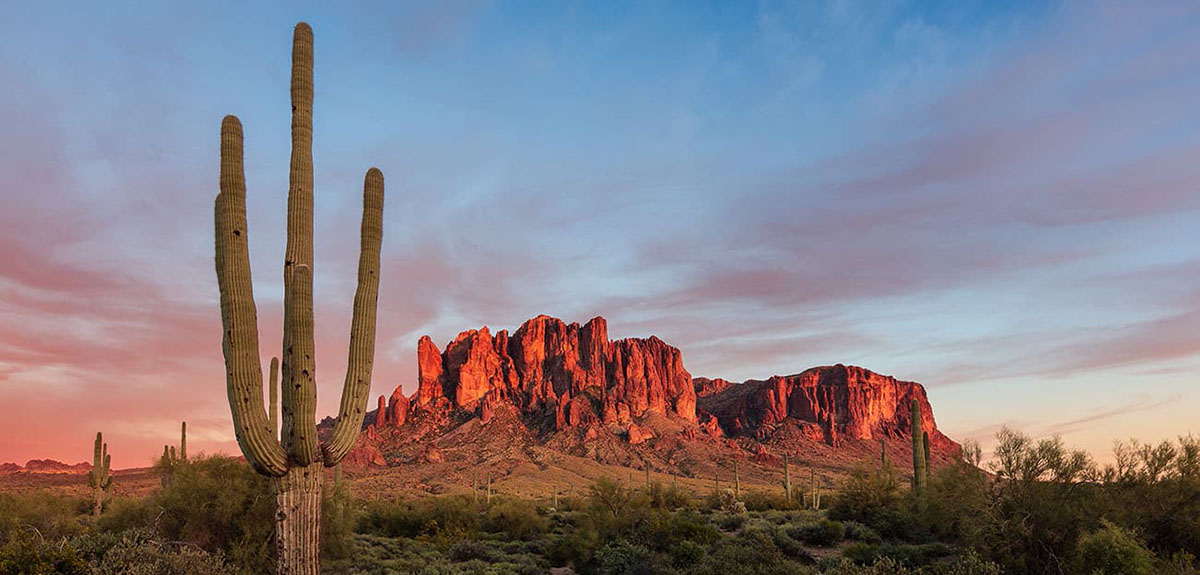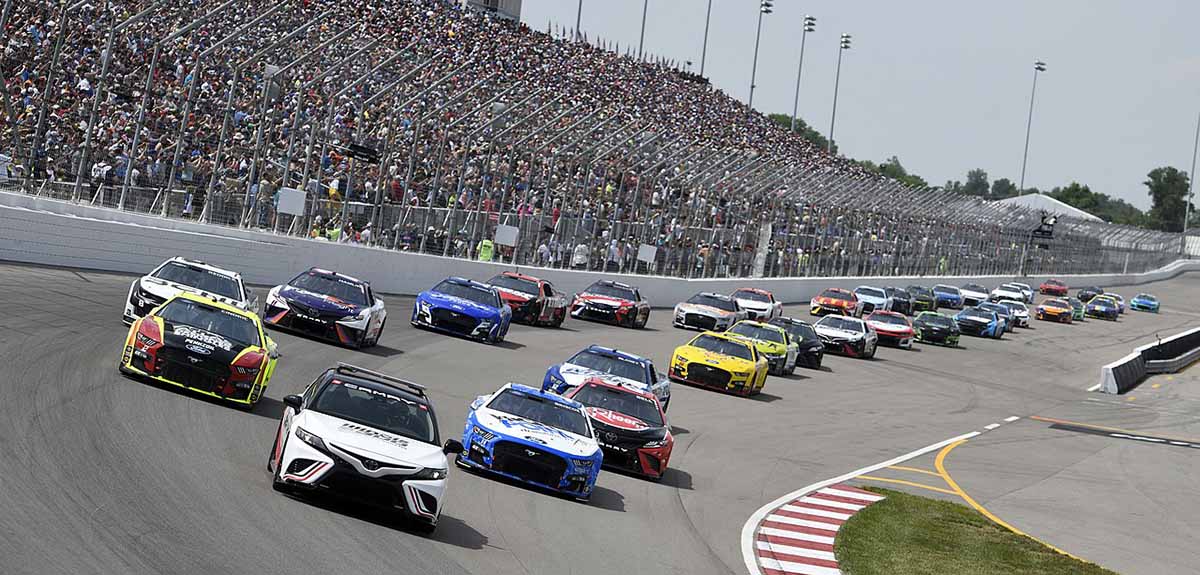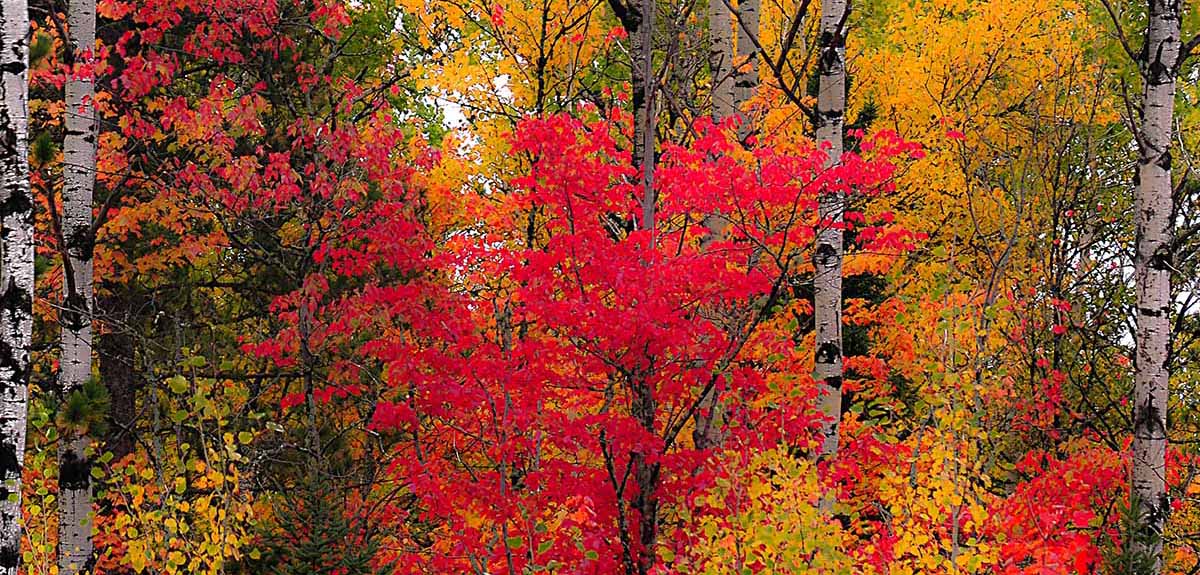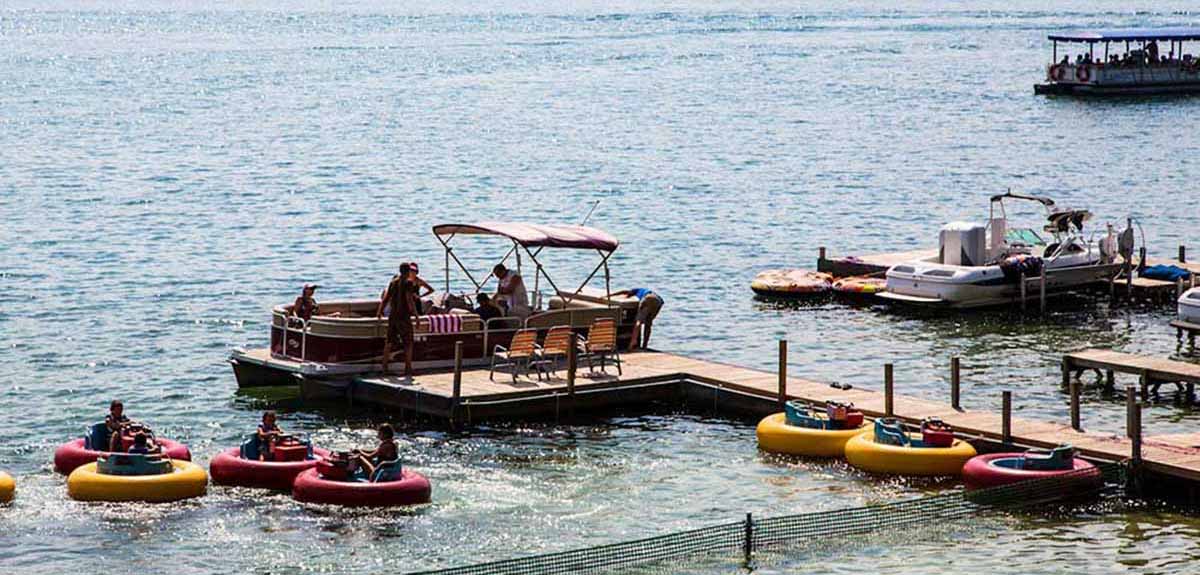Chocolatey Hershey Park Camping
Image Caption:
Camping near Hershey Park
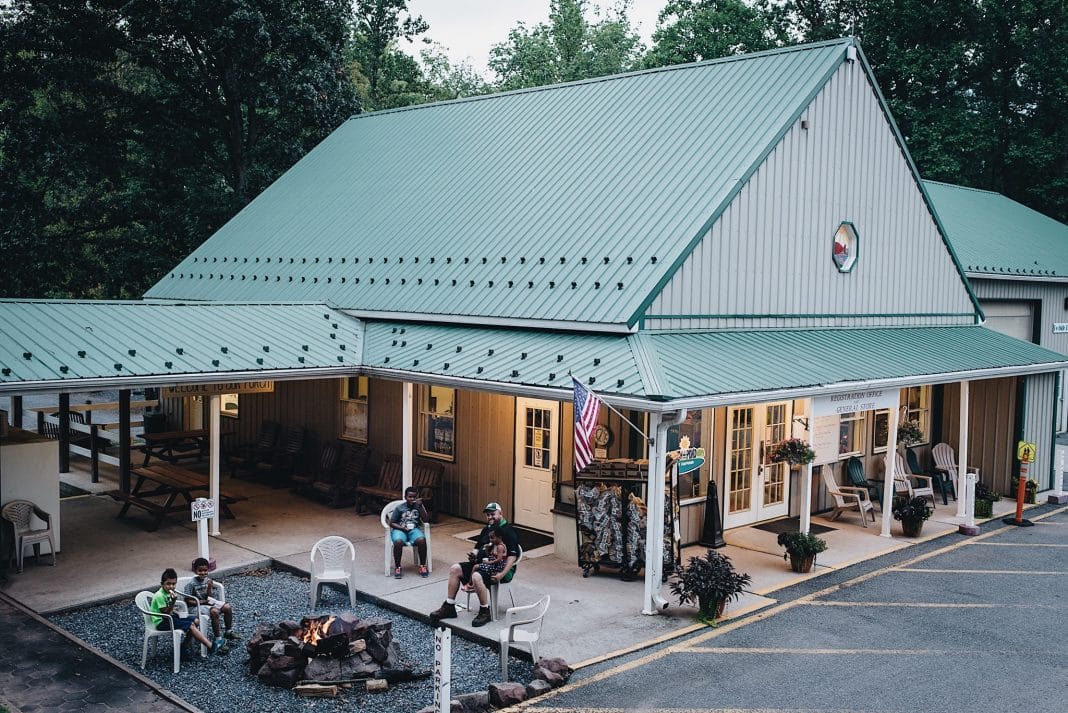
Pinch Pond offers wagon rides, hayrides, and events to celebrate the seasons – culminating with our famous Haunted House. Courtesy of Pinch Pond Facebook page.
For over 40 years the folks at Pinch Pond in Manheim, Pennsylvania, have been bringing families and friends together at their campground. Time spent enjoying roaring fires, wagon rides and incredible activities are planned almost every weekend. Typical activities include coffee and donut mornings, game nights, craft time, pool parties, barbecue dinners, golf cart decorating and parades, visits with Santa and so much more. With full-hookup sites and cabin rentals, this campground has it all. And with close proximity to Hersheypark and Hershey’s Chocolate World, your chocolate cravings will be 100 percent satisfied.
Hershey Park is open year-round, has 14 roller coasters, water attractions, live entertainment and special events throughout the year. How about something delicious and free for the family? Hershey’s Chocolate World is the place to start your visit on the free factory tour ride, complete with your own free Hershey’s product sample. They offer year-round daily tours.
The History of the Chocolate Chip Cookie
Did you know that August 4 is National Chocolate Chip Cookie Day here in America? An entire day focused on celebrating America’s No. 1 cookie. I cannot think of a better day to celebrate that homemade or store-bought favorite treat. From milk chocolate chips to extra dark chocolate chunks, the perfect balance is all in your creation.
Let’s explore the reason we celebrate the chocolate chip cookie, the woman who was the pioneer of this all-time favorite cookie, and how chocolate goes from bean to bar or to the chip. Time to take a sweet journey into the world of chocolate, discover a fantastic chocolate recipe, and I have a recommendation to help you find the perfect campsite to enjoy everything chocolate!
In 1937 Ruth Wakefield ran out of baker’s chocolate for her cookie recipe; what she had in her cupboard were semisweet chocolate morsels. She was certain they would melt and puddle all over that cookie but gave it a chance. Lo and behold, the chips kept their shape, softened a bit in the cooking process, and then firmed back up when the cookies cooled. History was made and the beloved chocolate chip cookie was born. Why was this woman so important? Ruth Wakefield and her husband owned the Toll House Inn, located in Whitman, Massachusetts. Like I said, she made history that day in her kitchen.
Chocolate Bean to Bar

Harvesting cocoa beans is a hands-on process. Photo by Kate Dunbar.
Along the equator is the growing region for the cacao tree. These trees need hot, humid, tropical weather to grow and produce the cacao pods. Seventy percent of the world’s cacao trees are grown in West Africa’s Ivory Coast, Ghana, Nigeria and Cameroon, and in Indonesia, Brazil and Ecuador. Smaller operations of cacao are grown in Hawaii, Florida, the Caribbean and Central Mexico, making up the remaining 30 percent.
Harvesting cocoa beans is a hands-on process. It takes a skilled eye to tell when the pod has reached its full maturity or development. Once the cocoa pods are harvested, the outer soft shell is split and peeled open to expose the fruit or cocoa pods. Once all the pods are removed by hand, they are placed in fermentation boxes, containers or barrels. This step is crucial in helping the seed coating break down and for the flavors to develop; this process takes about five days.
Once fermentation is complete, the beans are transferred to outdoor drying racks and screens, where over the next one to two weeks the sun slowly dries out the cocoa pod. Over that time, the cocoa bean will harden and change color from a rusty red to a deep, dark brown color.

Large rollers press and grind the nibs to release the “cocoa liquor.” Photo by Kate Dunbar.
The next step is washing the dried cocoa beans. Sorting of the beans by size follows, and finally the roasting process happens. After the roasting is complete, the beans go through a process called “winnowing” where the outer shell is removed and the cocoa nib is exposed. Large rollers press and grind the nibs to release the “cocoa liquor”; once that is collected, the liquor is pressed to extract the cocoa butter, leaving behind a solid mass called cocoa presscake. Here the next process splits into two directions: The cocoa butter product is used in the manufacturing of chocolate, giving it its smoothness, and the presscake is broken down into very small particles, sifted and cocoa powder is what remains.
When the cocoa liquor is mixed with cocoa butter, milk, sugar and some emulsifiers, a thick paste forms; it needs to be mixed and kneaded over heat to achieve the perfect consistency. Tempering happens next so the chocolate can be poured into molds, cooled and then released, wrapped and shipped to consumers, chefs, bakers and chocolate manufacturing companies.
Chocolate Types, Selections and Storage
Unsweetened Cocoa Powder
Pure chocolate in a powder form where most of the cocoa butter has been removed.
Used mainly in baking for cakes, cookies, icings and breads. There are two types of cocoa powder: natural and Dutch process. Natural cocoa powder is naturally acidic, has a strong or sharp taste and a slightly citrus finish. Dutch process is natural cocoa powder that has been washed with a potassium carbonate solution that neutralizes the cocoa’s acidity to a smooth, mellow flavor and a gorgeous deep mahogany color. If you want to use this cocoa powder in baking, you will need to add a leavening product such as baking powder.
Unsweetened Chocolate
also known as baking chocolate, chocolate liquor and pure chocolate. No sugar is added to this chocolate. Bakers use it so they can control the amount of sugar added in cakes, cookies, bars, breads and pastries.
Bittersweet Chocolate
At least 35 percent pure chocolate with some small amount of sugar added. When this chocolate is under a European label, it’s called dark chocolate. Some uses for this chocolate are mole sauces, baked goods and chocolate bars.
Semisweet Chocolate
At least 35 percent pure chocolate with added cocoa butter and sugar. This is the most popular type of chocolate for chips for cookies. You can find this form in blocks, chips, disks and squares. Semisweet chocolate is best in baked items.
Milk Chocolate
At least 10 percent pure chocolate with added cocoa butter and sugar. This mild chocolate-flavored product finds its place in most chocolate lovers’ hearts. With a very creamy and sweet flavor, most chocolate companies use this mixture for their products. Can be in a chip, block, bar and square form. Excellent for melting because of its high cocoa butter content, the preferred chocolate for camp staple s’mores.
White Chocolate
Made by combining cocoa butter with sugar, milk solids and flavoring, usually vanilla. This product does not contain any cocoa solids; it is made from the fatty content that is removed from the cocoa bean during the grinding and refining process. Best kept in the fridge because it tends to soften in warm places. Good in baked foods, breads, candy, icings, bars or as a melting chocolate.
Are you craving chocolate yet? Would you like to see how chocolate is made? Would you like to walk through cacao trees on a plantation? How about a ride on some of the best roller coasters at an amusement park where all things are centered around chocolate? Here are my chocolate-focused travel destinations for you.
Chocolate Overseas
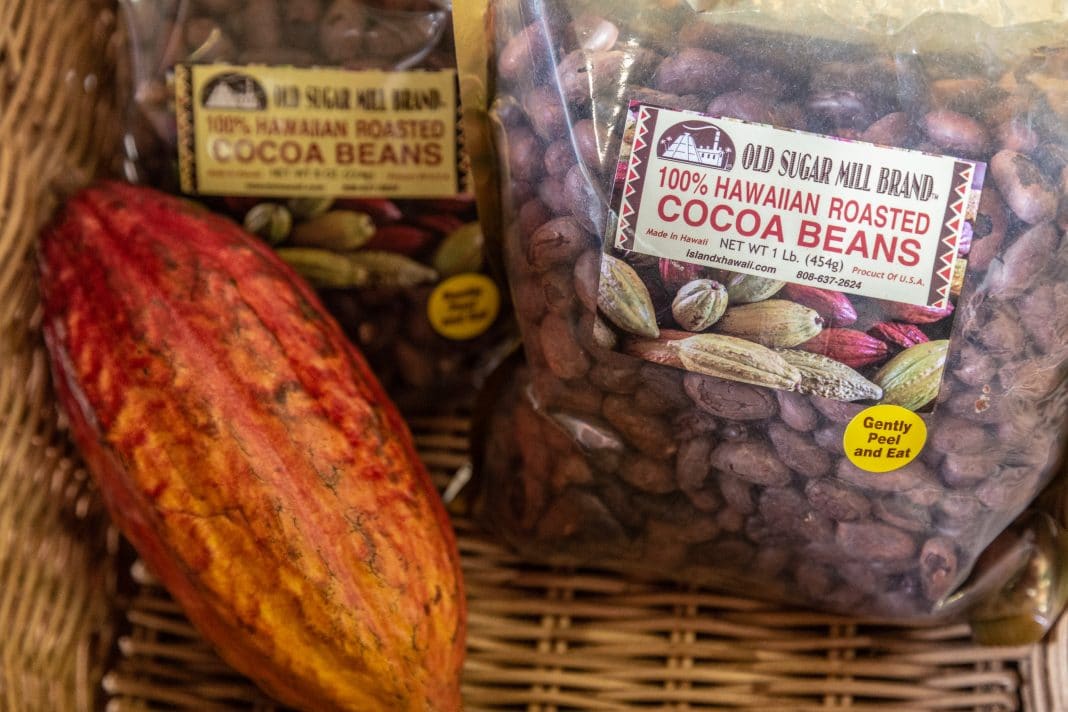
Waialua Estate Coffee and Chocolate. Photo by Kate Dunbar.
You can both satisfy your chocolate cravings and see how the complete bean-to-bar process is done at Waialua Estate Coffee and Chocolate on Oahu’s famous North Shore in the Hawaiian Islands. Walk along the cacao trees on their 80-acre plantation, smell the sweet cocoa scents, and enjoy the tropical breeze. They offer tours daily and samples of their chocolates are also available for you. What goes better with chocolate than coffee? Sample fresh roasted coffee grown around the cacao trees, eat delicious ice cream and bring home a few treats to enjoy. The Estate also offers their chocolate and coffee products online for you to order and enjoy. My favorite is the 55 percent cacao Cocoa Nib Bar. I love the crunchy texture from the crushed cocoa nibs and the chocolate is so smooth and has a hint of fruitiness.
Try the author’s recipe for cast-iron chocolate chip cookie.

